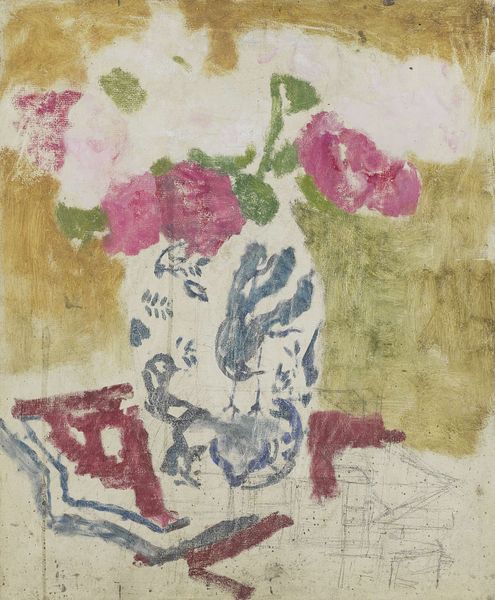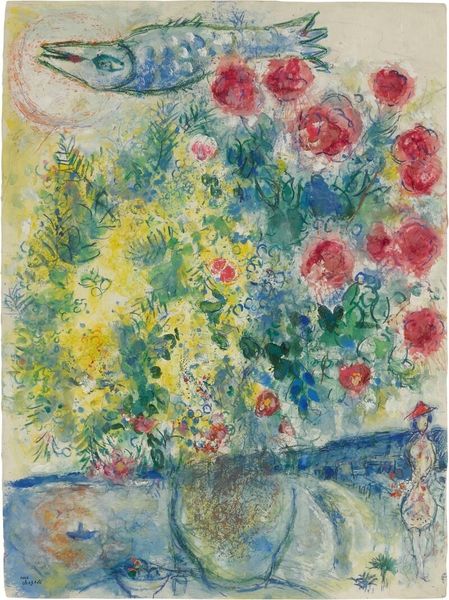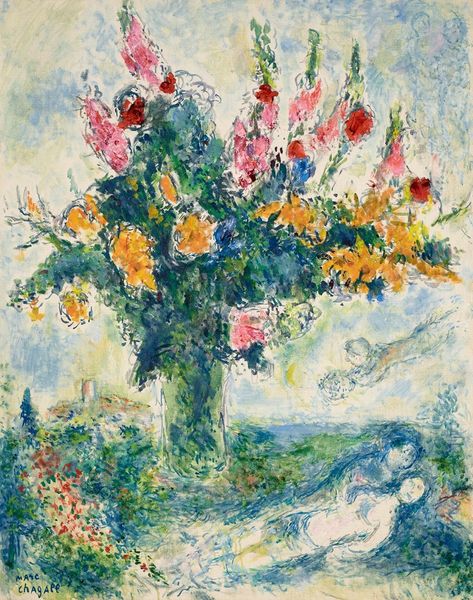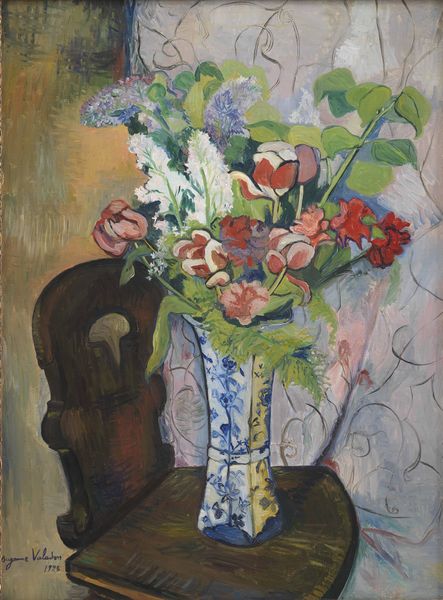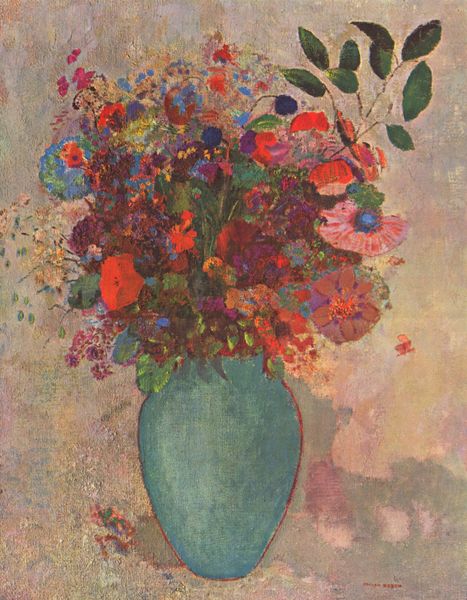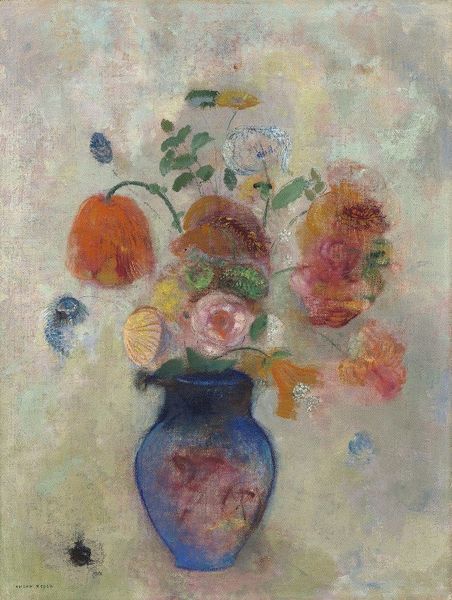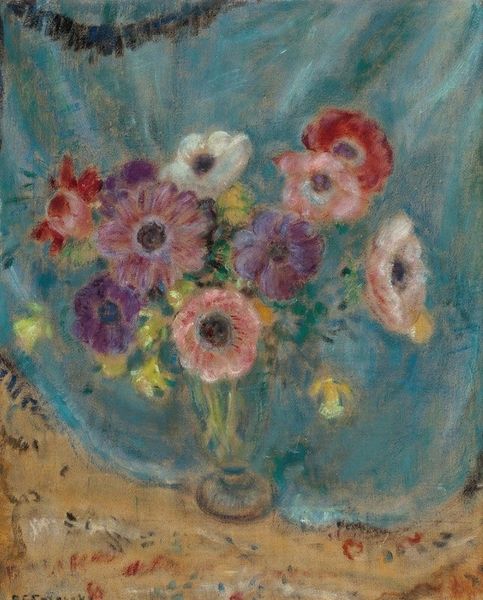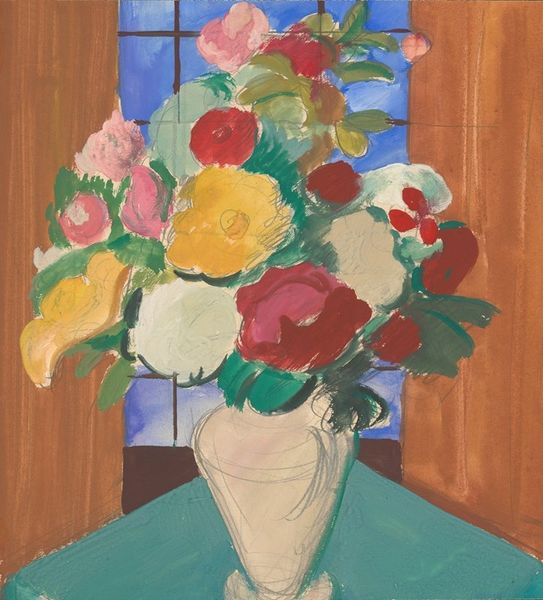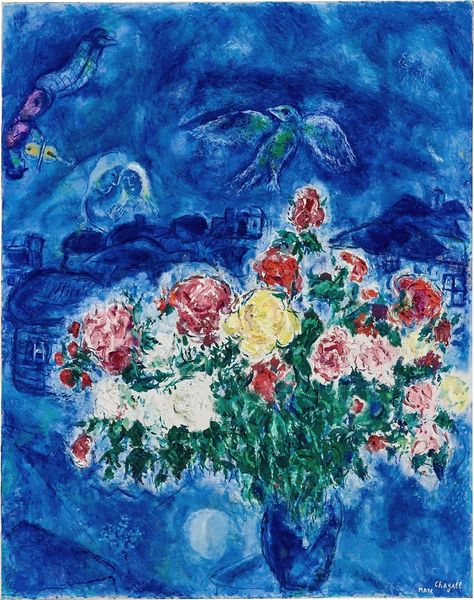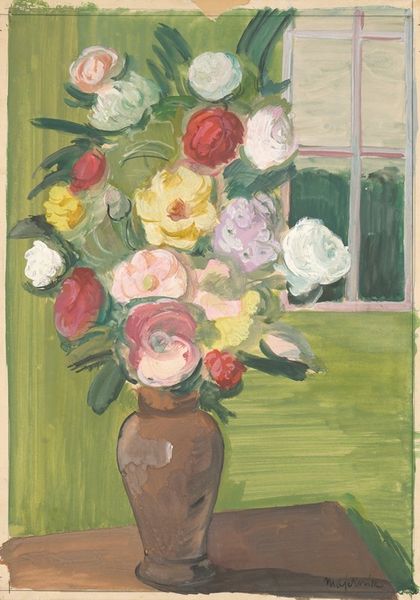
painting, watercolor
#
painting
#
landscape
#
figuration
#
watercolor
#
expressionism
Copyright: Modern Artists: Artvee
Curator: Standing before us is Marc Chagall's 1926 watercolor, "La chaise à Toulon or Les fleurs du Mourillon," a scene that blends domestic tranquility with the expansive outdoors. What strikes you first about this piece? Editor: The way the forms seem to float. There is very little sense of gravity. Also, a pervading softness to everything, as if light were constantly diffusing through the petals of those gorgeous blooms. Curator: The lightness could be from the watercolor, enabling thin, translucent washes, but Chagall often explored memory and emotion through this floating or dreamlike imagery. Toulon, a port city in France, becomes more than a place—it's a feeling, a memory imbued with a tangible sense of place. Consider how the artist combined, quite literally collides, interior still life with a panorama of a town with a sea. Editor: I'm drawn to the materials used here and, by extension, the production of the painting. Chagall has elevated humble materials like watercolor and paper. I would wonder about the source of that paper at that moment in time, about his access to such materials, and how the relative cost influenced the scale and ambition of the final piece. But beyond that, what of those hands of the labourers in that watercolor factory, to say nothing of the hands that harvested flax that constituted its linen? Curator: Absolutely. It makes one reconsider art beyond just the canvas or paper, thinking instead about how those materials carry embedded histories and the socioeconomic factors determining the choice of media. As for the visible forms in front of us, look closely at the way he has composed them to emphasize symbolic and personal narrative rather than objective representation. A chair implies the presence of humans, while the bouquet almost bursts beyond the frame—it is full of life, in vibrant tension to a muted scene of work happening at the sea on a fishing vessel. Editor: I agree. I am particularly touched by the humble materials elevating the seemingly straightforward scene, where he juxtaposes everyday objects with nature—or is it culture versus nature—that generates a powerful narrative. Curator: His artistic language speaks so strongly about the interconnectedness of the personal and public realms. Thank you for speaking with me today; your material perspective truly added another layer to our interpretation of this intriguing Chagall. Editor: Thank you, too. Exploring the painting with that visual approach illuminated new areas, so I'm delighted by how we were able to view this.
Comments
No comments
Be the first to comment and join the conversation on the ultimate creative platform.
